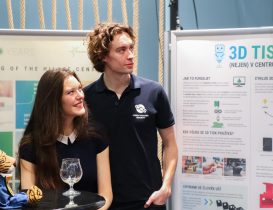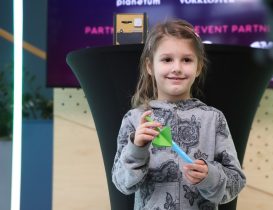The Lasarsat satellite, on which the Lasar student team and its partners, including the HiLASE Centre, have been working hard all this year, was launched into orbit on Saturday 21 December 2024.
Several dozen science fans gathered at the HiLASE Centre in Dolní Břežany to watch the satellite’s journey live. The commentary by Anna Krebsová and Ondřej Heigl was complemented by a live feed from California, USA, in which Simon Klinga (Lasar team leader) shared his impressions directly from the launch site.

The successful departure was only the beginning of the event. The wait for the actual launch of the satellite into orbit was shortened by accompanying activities, refreshments and interviews with Lasar partners. In one of them, Jan Vanda (Space and Defence Activity Coordinator) and Radek Pobořil (Space Systems Engineer) presented the role of HiLASE Centre in the development of Lasarsat and the importance of this cooperation for Czech laser research.
“Every great success starts with a bold idea and hard work. The launch of Lasarsat is proof that when we combine talent, innovation and collaboration, we can push the boundaries of what is possible,” comments Radek Pobořil.
“This is just the first step on the HiLASE Centre’s long journey into space. I believe that by working with such an enthusiastic team, we will soon be celebrating similar successes not only in Earth orbit, but beyond,” adds Jan Vanda on the subject of the HiLASE Centre’s vision for space activities.
This milestone completes the period of preparing the satellite for a successful launch, but its journey is just beginning. An idea from talented students has become a reality in the hands of Spacemanic, which successfully built the satellite itself, and the HiLASE Centre has supplied a parabolic mirror as a target for the laser beam. In the coming months, the concept of removing space debris with a laser will be tested to help clean up non-functioning orbiting satellites.













































